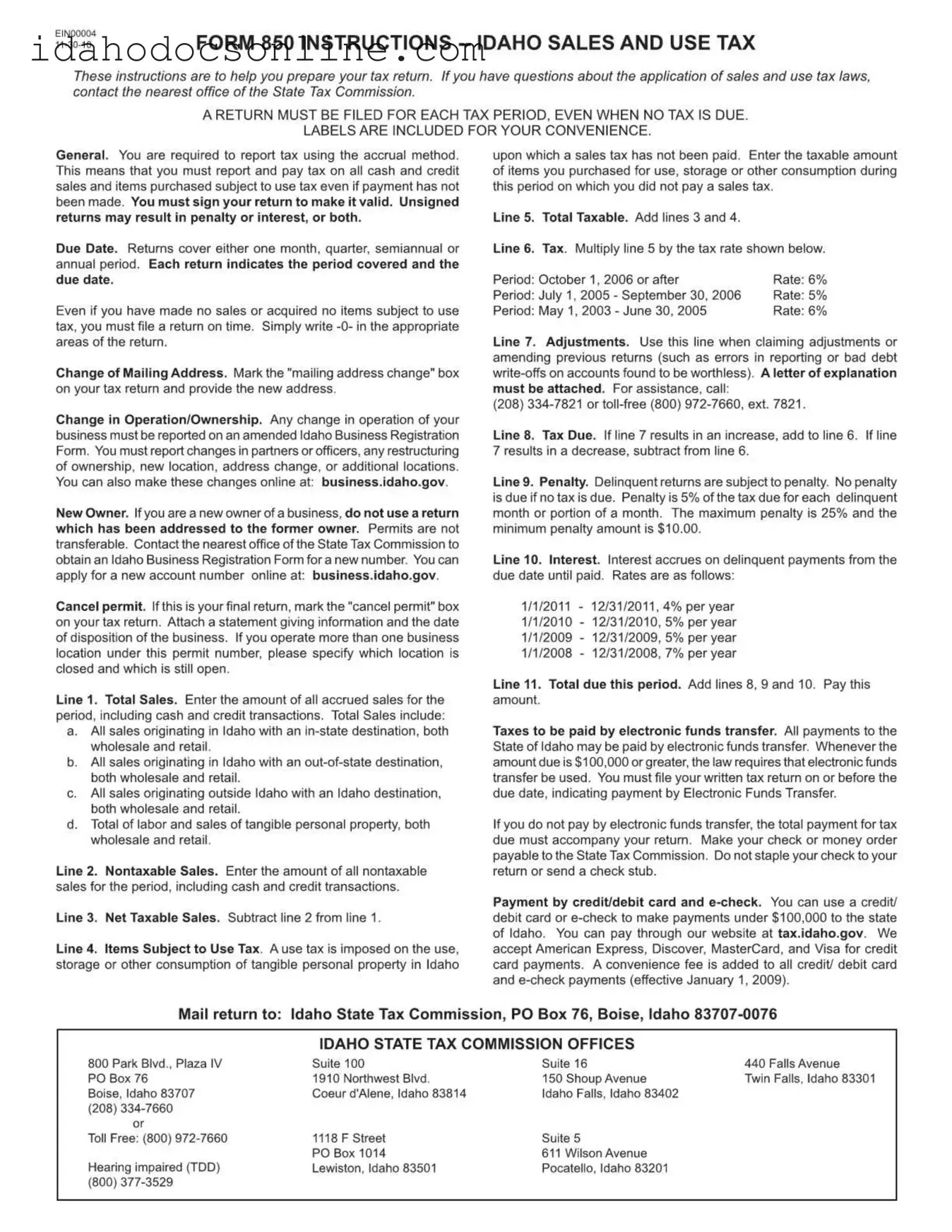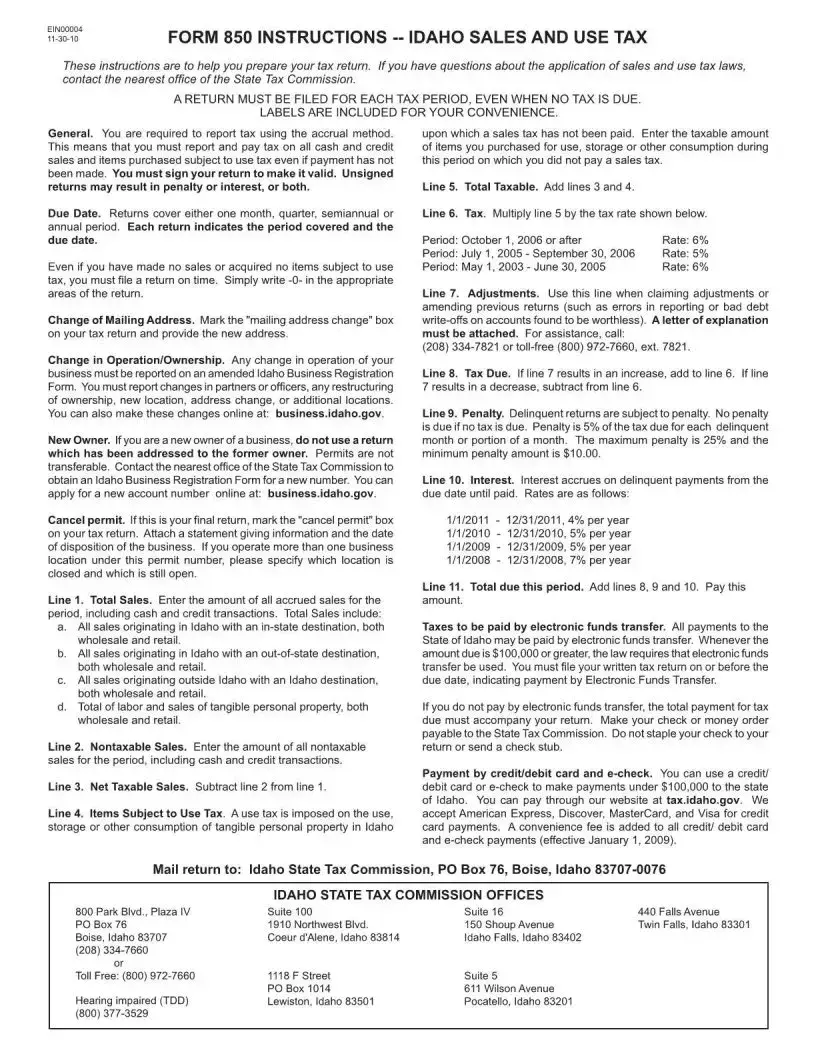Misconception 1: You don’t need to file a return if you had no sales.
Many people believe that if they didn’t make any sales during a tax period, they don’t need to file the Idaho 850 form. This is incorrect. You must file a return for each tax period, even if your sales were zero. Just write -0- in the appropriate areas of the return.
Misconception 2: You can transfer your permit to a new owner.
It’s a common misunderstanding that permits can be transferred from one owner to another. However, permits are not transferable. If you are a new owner, you need to obtain a new Idaho Business Registration Form and apply for a new account number.
Misconception 3: You can report sales tax using the cash method.
Some individuals think they can report sales tax using the cash method. In reality, the Idaho 850 form requires you to report tax using the accrual method. This means you must report all cash and credit sales, regardless of whether payment has been received.
Misconception 4: You don’t need to sign the return.
Another misconception is that signing the return is optional. In fact, you must sign your return for it to be valid. Unsigned returns can lead to penalties or interest, so it’s crucial to remember this step.
Misconception 5: You don’t have to report nontaxable sales.
Some people assume that nontaxable sales don’t need to be reported. However, you must enter the amount of all nontaxable sales on the Idaho 850 form. This helps ensure accurate reporting and compliance with tax laws.
Misconception 6: You can ignore interest and penalties if you file late.
Many believe that if they file their return late, they won’t face any consequences. Unfortunately, this is not true. Delinquent returns are subject to penalties and interest. The penalty can be 5% of the tax due for each month it is late, with a maximum of 25%.
Misconception 7: You can make payments in any form you like.
Some individuals think they can pay their taxes in any way they choose. However, payments of $100,000 or more must be made via electronic funds transfer. For amounts under $100,000, you can use a credit/debit card or e-check.
Misconception 8: You can file your return anytime before the due date.
It’s a common belief that you can file your return at your convenience as long as it’s before the due date. While you have until the due date to file, it’s best to file as early as possible to avoid last-minute issues and ensure compliance.

